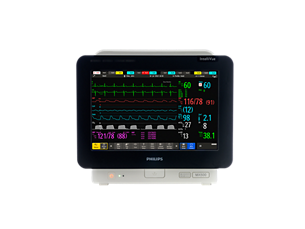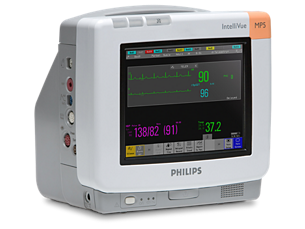- Automated documentation
- Automated documentation
Comprehensive documentation
Automated documentation of neonatal events provides precise, complete and clinically-meaningful documentation. By automating the detection of events, hospitals can also reduce the need for time consuming manual documentation, eliminate errors caused by manual record-keeping, and enhance nursing efficiency. - Quick, detailed views
- Quick, detailed views
Quick and detailed views for ease of use
The Neonatal Event Review application has two review windows. One offers a quick view of up to 50 events stored within the last 24 hours, displaying changes in patient status from one day to the next. A second window provides a detailed view of an individual event accompanied by a 4-minute Oxy-CRG. - Clinical decision support
- Clinical decision support
Supports decision making
Neonatal Event Review data helps clinicians with decision making by highlighting characteristics and sequences of neonatal events that could have ‘predictive’ value. Knowing the number, severity, and distribution of events means clinicians can identify underlying diseases and determine the most appropriate treatment. - Release criteria support
- Release criteria support
Documentation supports release criteria
All neonatal events and stored Oxy-CRG episodes can be printed using Philips bedside recorders or central printers. This documentation supports hospital release criteria and can be added to the patient record for recall if required.
Comprehensive documentation

Comprehensive documentation

Comprehensive documentation
Quick and detailed views for ease of use

Quick and detailed views for ease of use

Quick and detailed views for ease of use
Supports decision making

Supports decision making

Supports decision making
Documentation supports release criteria

Documentation supports release criteria

Documentation supports release criteria
- Automated documentation
- Quick, detailed views
- Clinical decision support
- Release criteria support
- Automated documentation
- Automated documentation
Comprehensive documentation
Automated documentation of neonatal events provides precise, complete and clinically-meaningful documentation. By automating the detection of events, hospitals can also reduce the need for time consuming manual documentation, eliminate errors caused by manual record-keeping, and enhance nursing efficiency. - Quick, detailed views
- Quick, detailed views
Quick and detailed views for ease of use
The Neonatal Event Review application has two review windows. One offers a quick view of up to 50 events stored within the last 24 hours, displaying changes in patient status from one day to the next. A second window provides a detailed view of an individual event accompanied by a 4-minute Oxy-CRG. - Clinical decision support
- Clinical decision support
Supports decision making
Neonatal Event Review data helps clinicians with decision making by highlighting characteristics and sequences of neonatal events that could have ‘predictive’ value. Knowing the number, severity, and distribution of events means clinicians can identify underlying diseases and determine the most appropriate treatment. - Release criteria support
- Release criteria support
Documentation supports release criteria
All neonatal events and stored Oxy-CRG episodes can be printed using Philips bedside recorders or central printers. This documentation supports hospital release criteria and can be added to the patient record for recall if required.
Comprehensive documentation

Comprehensive documentation

Comprehensive documentation
Quick and detailed views for ease of use

Quick and detailed views for ease of use

Quick and detailed views for ease of use
Supports decision making

Supports decision making

Supports decision making
Documentation supports release criteria

Documentation supports release criteria

Documentation supports release criteria
Related products
Alternative products
-
IntelliVue MX400
- 9"-wide touchscreen helps you see it clearly and quickly
- Advanced Clinical Solutions to summarize and visualize data
- Ambient light adjustment for readability in virtually any environment
- Connectivity options help you make the most of your EMR
View product
-
IntelliVue MX800
- Integrated PC and monitor in one offers one intuitive view
- Separate but together for up-to-date information
- Easy to use to save time and effort
- Actionable information at the point of care to support decisions
View product
-
IntelliVue MX450
- 12"-wide touchscreen helps you see it clearly and quickly
- Advanced Clinical Solutions to summarize and visualize data
- Ambient light adjustment for readability in nearly any environment
- Connectivity options help you make the most of your EMR
View product
-
IntelliVue MX500
- 12"-wide touchscreen helps you see it clearly and quickly
- Advanced Clinical Solutions to summarize and visualize data
- Ambient light adjustment for readability in virtually any environment
- Connectivity options help you make the most of your EMR
View product
-
IntelliVue MX550
- 15"-wide touchscreen helps you see it clearly and quickly
- Advanced Clinical Solutions to summarize and visualize data
- Ambient light adjustment for readability in virtually any environment
- Connectivity options help you make the most of your EMR
View product
-
IntelliVue MP5
- Intuitive touchscreen simplifies use
- Dynamic Wave area auto-sizes waves
- Built-in measurements reduce setup
- Horizon Trends provide context
View product
-
IntelliVue MX400
The IntelliVue MX400 provides powerful monitoring in a highly compact, highly transportable unit. Supplying comprehensive patient information at a glance, it can make a real difference when multiple patients and priorities need attention.
View product
-
IntelliVue MX800
The IntelliVue MX800 is Philips first patient care solution to incorporate patient monitoring and clinical informatics. Designed to simplify access to patient information you need to enhance diagnostic confidence throughout the hospital.
View product
-
IntelliVue MX450
The IntelliVue MX450 patient monitor combines powerful monitoring with flexible portability in one compact unit. Supplying comprehensive patient information at a glance, it can make a real difference when multiple patients and priorities need attention.
View product
See all related products -
IntelliVue MX500
The IntelliVue MX500 combines powerful monitoring with flexible portability in one compact unit. Supplying comprehensive patient information at a glance, it can make a real difference when multiple patients and priorities need attention.
View product
-
IntelliVue MX550
The IntelliVue MX550 pairs powerful bedside monitoring with the reassurance of a battery backup. Supplying comprehensive patient information at a glance, it can make a real difference when multiple patients and priorities need attention.
View product
-
IntelliVue MP5
Philips IntelliVue MP5 bedside patient monitor provides actionable information about your patients. It delivers IntelliVue monitoring power and functionality in a compact, rugged housing to serve a wide range of care environments.
View product






